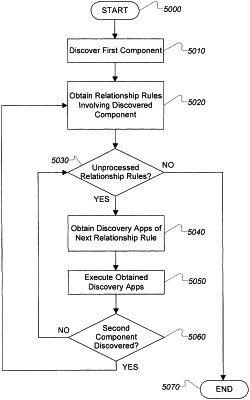| CPC H04L 41/12 (2013.01) [H04L 41/04 (2013.01); H04L 43/08 (2013.01)] | 21 Claims |

|
1. A system for monitoring and/or managing components including:
a processor, and
memory connected to the processor, the memory storing instructions that when executed by the processor cause the processor to perform operations comprising:
a. detecting a first set of components using a first data collection method,
b. constructing a first set of relationships between the first set of components, wherein the first set of relationships is represented as a first graph,
c. detecting a second set of components using a second data collection method,
d. constructing a second set of relationships between the second set of components, wherein the second set of relationships is represented as a second graph,
wherein the constructed relationships are represented as independent subgraphs in each of the first and second independent graphs,
e. in response to the first and second relationship sets, identifying at least one component in the first component set and at least one component in the second component set as being the same component, and
f. matching a subgraph from the first set of relationships graph to a subgraph in the second set of relationships graph in order to identify common subgraphs between the two independent graphs in order to determine a prospective shared component between the graphs.
|